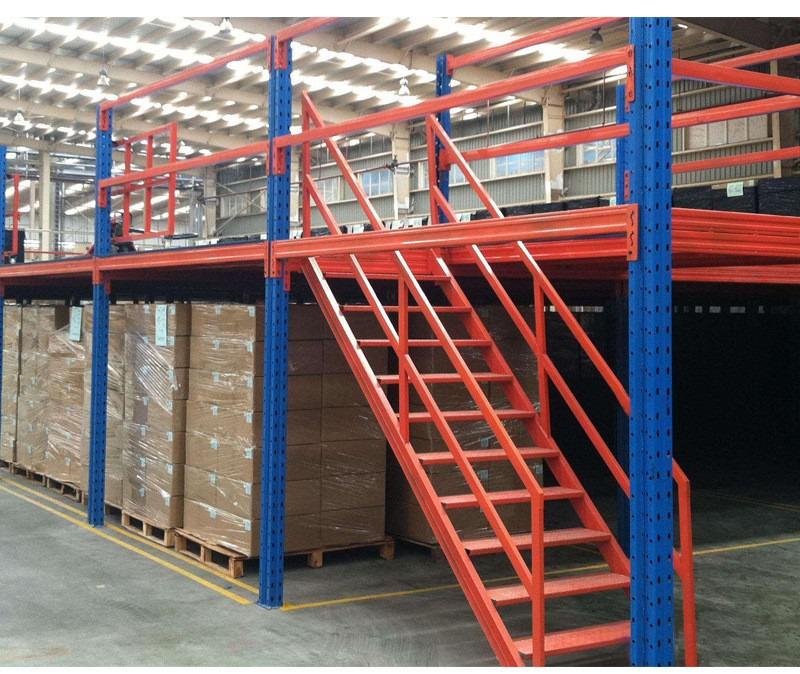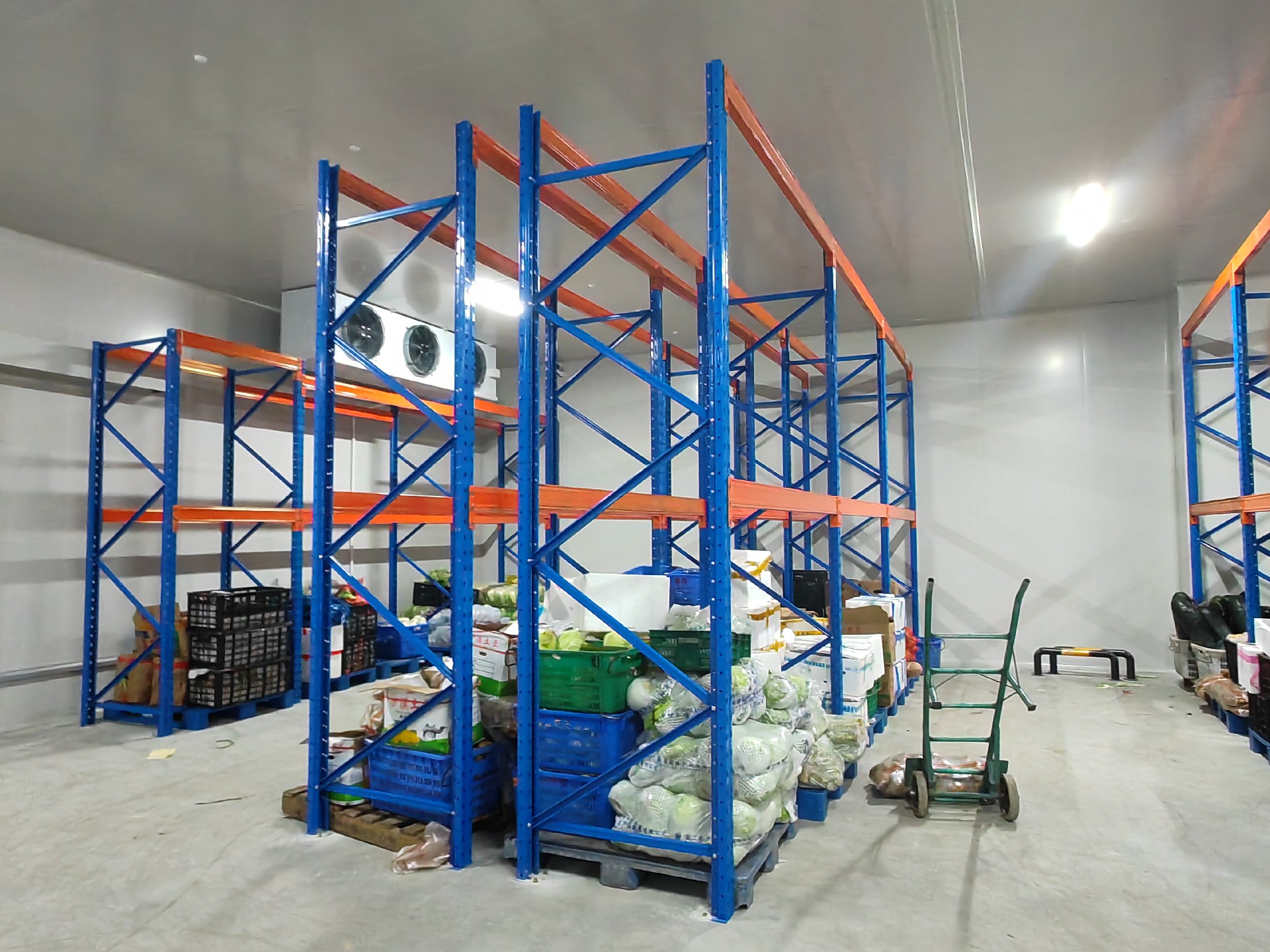In the dynamic world of logistics and inventory management, efficient storage isn't just a convenience – it's a critical competitive advantage. At the heart of nearly every successful warehouse operation lies a fundamental element: warehouse shelving systems. These structures are far more than simple metal racks; they are the engineered backbone that organizes space, maximizes accessibility, protects valuable inventory, and drives operational efficiency. Choosing the right warehouse shelving systems is a strategic decision impacting everything from labor costs to order fulfillment speed. This comprehensive guide delves into the essential aspects you need to understand to select, implement, and optimize your warehouse shelving systems for peak performance.

1. Understanding the Core Types of Warehouse Shelving Systems
Not all storage needs are created equal, and thankfully, neither are warehouse shelving systems. The primary types cater to different inventory profiles, access requirements, and space constraints:
•Selective Pallet Racking: The undisputed workhorse of the industry. This versatile system allows direct access to every single pallet load stored within it. Pallets are typically stored on horizontal load beams, one deep, facing the aisle. Its key advantages include:100% SKU accessibility for first-in, first-out (FIFO) or last-in, first-out (LIFO) inventory management.Ease of installation, reconfiguration, and expansion.Compatibility with a wide range of forklift types (narrow aisle, reach trucks, counterbalance).Ideal for warehouses with a high number of SKUs requiring frequent individual picks or full-pallet retrieval.
•Drive-In/Drive-Thru Racking: Designed for high-density storage of large quantities of the same SKU. This system eliminates aisles between rows of racking. Forklifts literally drive into the rack structure to place or retrieve pallets, which rest on rails rather than beams.Drive-In: Loading and unloading occur from the same aisle (LIFO inventory flow).Drive-Thru: Loading from one side, unloading from the opposite side (FIFO possible).Maximizes cubic storage space by drastically reducing the number of aisles required.Best suited for homogeneous product with lower SKU turnover or batch storage (e.g., seasonal items, beverages).
•Push-Back Racking: A dynamic LIFO system offering high density with better selectivity than drive-in. Pallets are loaded on wheeled carts nested on inclined rails. When a new pallet is loaded, it pushes the pallet(s) behind it further back into the lane.Typically stores 2-6 pallets deep per lane.Provides direct access to multiple SKUs (each lane can be a different SKU).Ideal for medium to high-turnover inventory where multiple SKUs need density but some selectivity is required.
•Pallet Flow Racking: A dynamic FIFO system utilizing inclined rails and gravity rollers. Pallets are loaded at the higher end of the lane and flow by gravity to the unloading end at the front.Ensures strict FIFO inventory rotation – critical for perishable goods or items with expiration dates.High-density storage similar to push-back.Reduces forklift travel time for loading/unloading. Requires minimal forklift maneuvering at the load face.Excellent for high-volume, fast-moving SKUs requiring rotation.
•Cantilever Racking: Specifically designed for storing long, bulky, or irregularly shaped items that don't fit well on standard pallet racking. Features long horizontal arms extending from vertical columns.Ideal for lumber, pipes, furniture, rolls (carpet, fabric), doors, and sheet metal.Offers unobstructed access from the sides for easy loading/unloading.Arms can be adjusted vertically to accommodate different load heights.
•Mobile Pallet Racking (Mobile Aisle Shelving): Entire rows of shelving are mounted on carriages that move laterally on floor tracks. Only one aisle is open at a time, accessed by moving the adjacent rows.Achieves the absolute highest storage density – often 60-80% more than fixed aisle systems.Significantly reduces the amount of floor space dedicated to aisles.Requires specialized motorized or mechanical systems to move the rows. Ideal for low-turnover, high-value inventory, or archives where space is extremely costly.
2. Key Components and Specifications of Warehouse Shelving Systems
Understanding the anatomy of warehouse shelving systems is crucial for specification and safety:
•Frames (Uprights): The vertical support structures. Key specifications include:Gauge: Thickness of the steel (lower gauge number = thicker steel = higher capacity).Height: Determines overall storage height.Depth: Distance from front to back of the frame.Column Profile: Shape (e.g., teardrop, structural bolt-together) affecting strength and beam connection method.Footplate: Base plate anchored to the floor for stability.
•Beams: Horizontal members that span between uprights and support the load. Specifications:Length: Determines the bay width.Height: Beam depth, impacting strength.Gauge: Steel thickness.Type: Step beams, box beams, structural beams – varying in strength and connection method.Load Capacity: The maximum uniformly distributed load (UDL) the beam pair can safely support. Crucial for safety!
•Decking: The surface upon which products or pallets rest. Options include:Wire Mesh Decking: Allows light and sprinkler penetration, common for pallet support over beams.Particle Board/MDF Decking: Solid surface for small items in shelving units.Steel Sheet Decking: Heavy-duty solid surface.Pallet Supports: Specific bars or rails for palletized loads.
•Row Spacers & Braces: Diagonal or horizontal braces connecting frames within a row for stability and to prevent rack collapse.
•Aisle Connectors: Horizontal beams connecting frames across the aisle at the top and often mid-level, providing lateral stability to the entire structure.
•Shims & Baseplates: Used for leveling the rack on uneven floors and anchoring securely to the concrete.
•Load Capacity: The most critical specification. Defined as:Uniformly Distributed Load (UDL): The safe maximum load per shelf level or beam pair.Point Load: The maximum concentrated load at any point on the beam/shelf.Always consult a qualified rack design engineer and adhere strictly to load ratings. Never exceed capacities!
•Safety Features: Integral components include:Column Protectors (Rack Guards): Bolted to uprights at floor level to absorb forklift impacts.End-of-Aisle Guards: Protect uprights at aisle ends.Pallet Supports/Wire Decking: Prevents pallets from falling between beams.Load Beams Locks: Secures beams into uprights to prevent accidental dislodgement.

3. Critical Factors for Selecting the Right Warehouse Shelving System
Choosing the optimal warehouse shelving systems requires careful analysis of your specific operation:
•Inventory Characteristics:SKU Profile: Number of unique items.Dimensions & Weight: Size and weight of individual items, cases, or pallets.Turnover Rate (Velocity): How often items are picked or replenished (Fast, Medium, Slow).Inventory Rotation Requirements: FIFO, LIFO, or no specific requirement.Hazardous/Special Needs: Temperature control, flammability, fragility.
•Warehouse Infrastructure:Building Dimensions: Clear ceiling height, floor area, column locations, door placements.Floor Condition & Load Capacity: Must support the racking and inventory weight.Sprinkler System & Lighting: Racking layout must comply with fire codes and allow adequate light penetration.Column Spacing: Can impact optimal rack row layout.
•Material Handling Equipment (MHE):Type of Forklifts/AGVs: Reach truck, counterbalance, narrow-aisle (VNA), order picker? Each has specific aisle width requirements.Lift Height & Capacity: Must match the racking height and load requirements.Maneuverability: Impacts required aisle widths.
•Operational Requirements:Picking Methods: Case picking, pallet picking, each-picking? Influences accessibility needs.Throughput Volume: Number of picks/replenishments per shift/day.Scalability: Need for future expansion or reconfiguration?Budget: Initial investment vs. long-term ROI (considering space savings, labor efficiency gains).
•Safety & Compliance: Adherence to local building codes and industry standards (e.g., RMI - Rack Manufacturers Institute standards in the US, SEMA in the UK) is non-negotiable. Professional design and installation are paramount.
4. The Tangible Benefits of Optimized Warehouse Shelving Systems
Investing in the right warehouse shelving systems delivers significant, measurable returns:
•Maximized Space Utilization: Efficiently uses both vertical cube (height) and horizontal floor space. High-density systems like drive-in, push-back, or mobile racking dramatically increase storage capacity within the same footprint compared to selective racking alone.
•Enhanced Inventory Accessibility & Visibility: Well-organized systems, especially selective racking, allow workers to quickly locate and retrieve specific items, reducing travel time and pick errors. Clear labeling and logical slotting are facilitated.
•Improved Operational Efficiency & Productivity: Faster picking, easier replenishment, and smoother material flow directly translate to more orders processed per labor hour and reduced operational costs.
•Increased Inventory Protection: Properly designed and maintained warehouse shelving systems provide stable, secure storage, minimizing product damage from falls, impacts, or improper stacking. Decking protects items from falling through beams.
•Enhanced Safety: Structurally sound racking, combined with safety features (guards, decking, beam locks) and clear aisle markings, significantly reduces the risk of accidents like rack collapses, falling loads, or forklift collisions. Compliance with safety standards is ensured.
•Scalability & Flexibility: Most modern systems, particularly selective racking, are designed for easy reconfiguration or expansion as inventory profiles or business needs change. Beams can be relocated, and sections added.
•Better Inventory Control: Facilitates accurate cycle counting and inventory management practices by providing organized, designated locations for every SKU.
5. Installation, Maintenance, and Safety Best Practices
Implementing warehouse shelving systems is not a "set it and forget it" endeavor:
•Professional Installation: Always use qualified, experienced installers. Proper assembly, leveling, and anchoring are critical for structural integrity and safety. They ensure adherence to the engineered design drawings.
•Rack Inspection & Maintenance: Regular, documented inspections are mandatory:Initial Inspection: Post-installation, before loading.Routine Operational Inspections: Conducted frequently by trained warehouse personnel (e.g., weekly, monthly) – looking for visible damage, leaning, overloads, missing components.Formal Inspections: Conducted annually (or more frequently in high-traffic areas) by a qualified rack safety inspector (SEMA Approved Inspector in the UK, equivalent elsewhere). This involves detailed checks using precise measurement tools.
•Damage Protocol: Establish a clear procedure. Any observed damage (bends, dents, cracks, missing components) must be reported immediately. Affected sections should be unloaded immediately and isolated. Repairs must only be conducted by qualified professionals using approved replacement parts – never attempt field repairs with makeshift materials.
•Strict Adherence to Load Ratings: Never exceed the UDL or point load ratings specified for the beams and uprights. Distribute loads evenly. Load signs should be clearly visible.
•Proper Pallet & Product Handling: Ensure pallets are in good condition and properly positioned on beams. Avoid overhang. Train forklift operators thoroughly on safe maneuvering within aisles, emphasizing awareness of rack structures and avoiding impacts.
•Aisle Discipline: Keep aisles clear of obstructions. Ensure adequate lighting. Mark floor lanes clearly. Enforce safe speed limits for MHE.
6. Future Trends in Warehouse Shelving Systems
The evolution of warehouse shelving systems continues, driven by automation and efficiency demands:
•Integration with Automation: Systems are increasingly designed to seamlessly interface with:Automated Storage and Retrieval Systems (AS/RS): Including unit-load AS/RS for pallets and mini-load systems for cases/totes. Racking becomes part of the automated structure.Autonomous Mobile Robots (AMRs): Racking layouts optimized for robot navigation and access.Automated Guided Vehicles (AGVs): Requiring precise rack alignment and potentially specialized interfaces.
•Modular & Scalable Designs: Continued focus on systems that can be easily reconfigured or expanded rapidly to accommodate changing business needs and inventory fluctuations.
•Data-Driven Optimization: Using Warehouse Management System (WMS) data and analytics to continuously refine slotting strategies within the warehouse shelving systems, placing fast-moving items in the most accessible "golden zone" and optimizing travel paths.
•Advanced Safety Technologies: Integration of sensors on racking to detect impacts, monitor loads, or even structural stress, providing real-time alerts for proactive maintenance.
•Sustainable Materials & Practices: Increased focus on using recycled steel, designing for disassembly/recycling, and optimizing systems for energy efficiency (e.g., reducing lighting needs in high-density areas).
Warehouse shelving systems are far more than passive storage structures; they are dynamic, engineered solutions that fundamentally shape warehouse efficiency, safety, and profitability. Selecting the right type – whether it's versatile selective racking, high-density drive-in systems, dynamic push-back or flow racks, specialized cantilevers, or space-maximizing mobile aisles – requires a thorough understanding of your inventory, operations, equipment, and facility. By prioritizing professional design, meticulous installation, rigorous ongoing maintenance, and strict adherence to safety protocols, businesses unlock the full potential of their storage space. In an era where logistics speed and cost-effectiveness are paramount, investing in optimized warehouse shelving systems is not an expense, but a strategic investment in the foundation of a successful and scalable supply chain operation. Choose wisely, maintain diligently, and reap the rewards of a perfectly organized and efficient warehouse.







